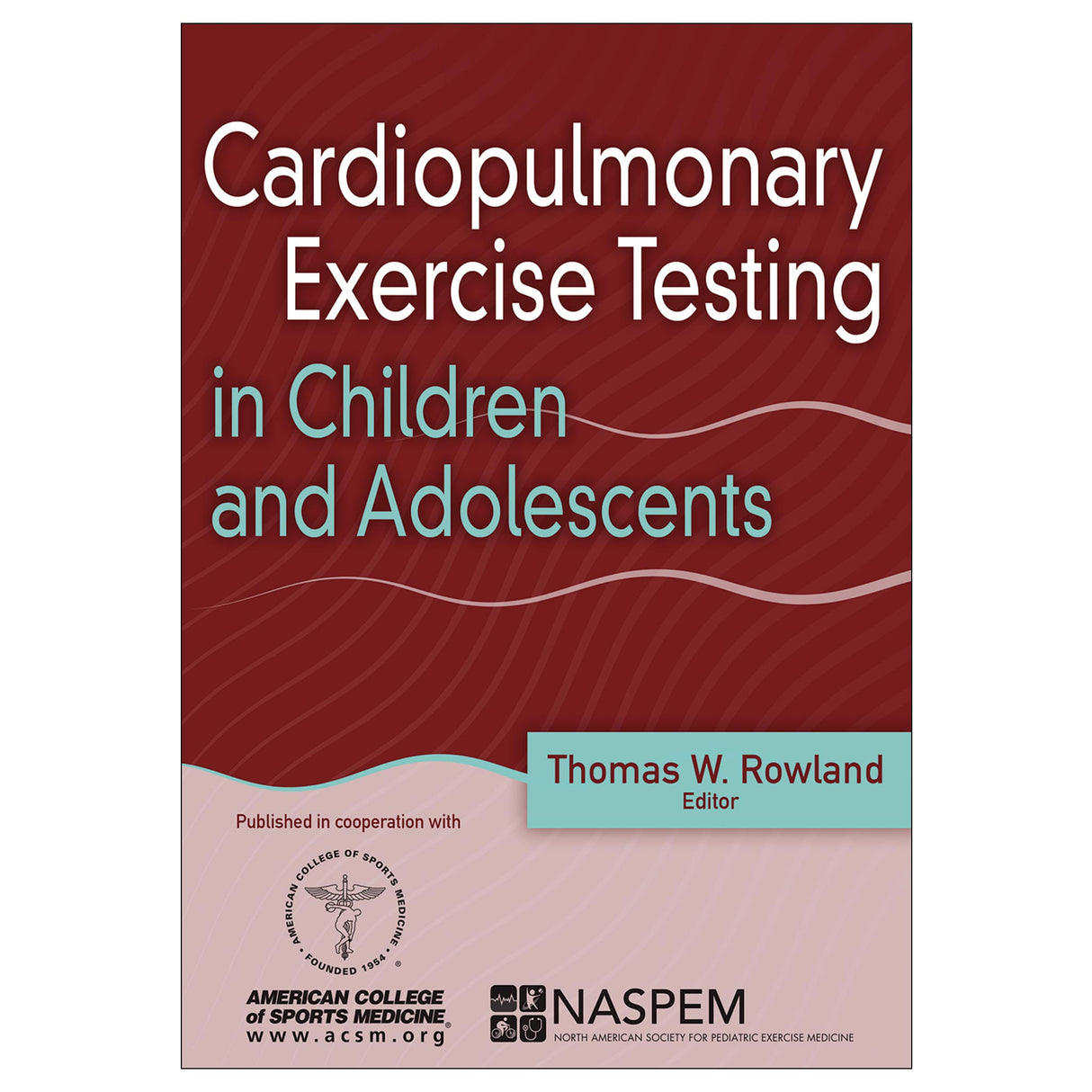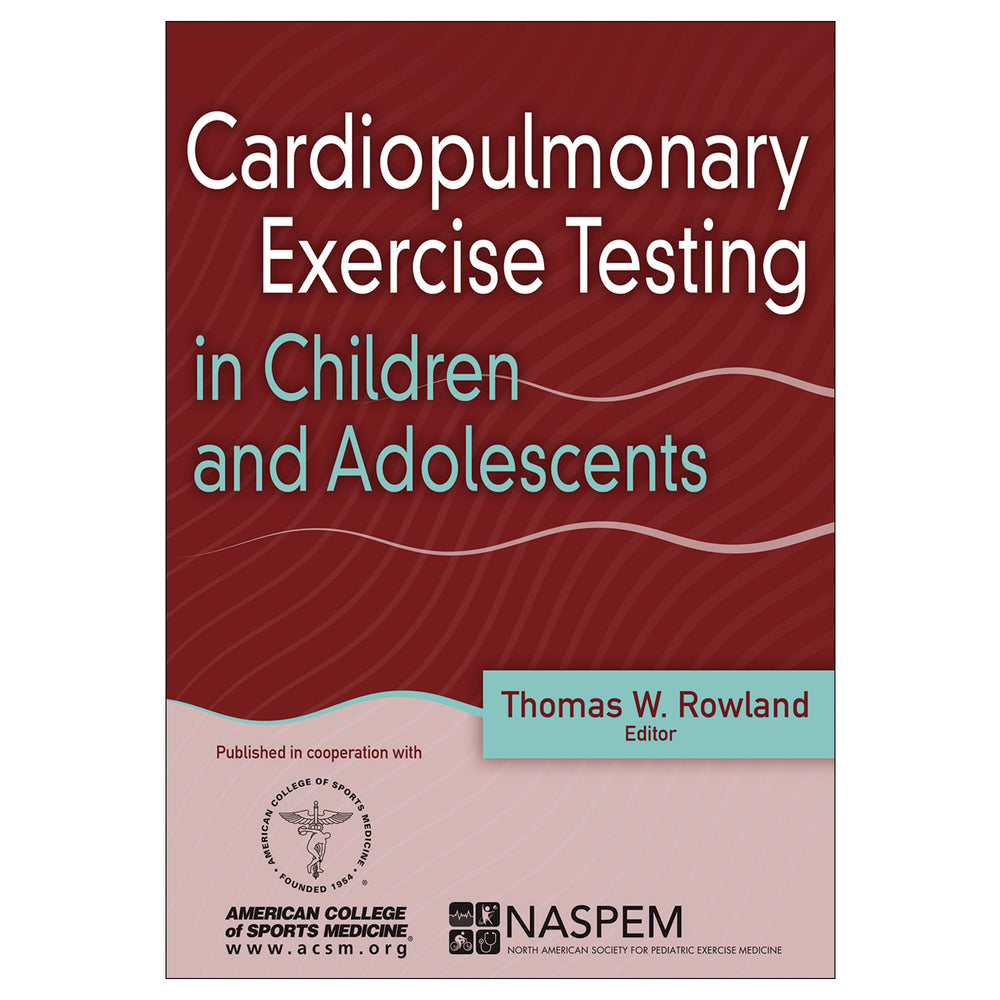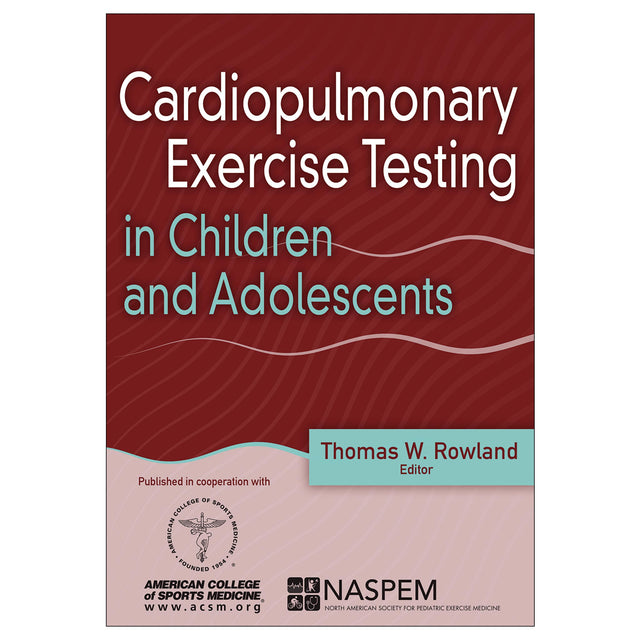Cardiopulmonary Exercise Testing in Children and Adolescents PDF
Author: Thomas W. Rowland
$117.95 CAD
Access Duration: 10 Years
Exercise testing plays an increasingly important role in the diagnosis and assessment of heart disease and lung disease in children and adolescents. In Cardiopulmonary Exercise Testing in Children and Adolescents, leading expert Thomas W. Rowland, backed by the American College of Sports Medicine (ACSM) and the North American Society for Pediatric Exercise Medicine (NASPEM), compiles the latest evidence-based research to provide guidance for clinical exercise physiologists, cardiologists, pulmonologists, and students of exercise physiology who conduct exercise stress testing for young patients.
The core objective of the book is to clarify the differences between clinical exercise testing for children and testing for adults. Because of obvious differences between the two populations, test protocols must be modified based on the patient's age, size, level of physical fitness, body composition, intellectual and emotional maturity, and state of cardiac and pulmonary health.
Part I provides an introduction to pediatric exercise testing. Part II examines exercise testing methodologies and discusses blood pressure, cardiac output, electrocardiography, oxygen uptake, and pulmonary function. Part III focuses on specific clinical issues addressed by exercise testing, guiding readers through protocols for diagnosis, evaluation, and exercise testing. Part IV explores testing in special populations and focuses on topics such as childhood obesity, neuromuscular disease, and intellectual disabilities.
Where applicable, sample forms and checklists provide practitioners with practical materials to use during exercise testing. Sidebars offer readers insight into considerations such as the presence of parents during testing and adjustments of cardiac measures for youth body dimensions.
This book serves as a means of focusing and unifying approaches to performing pediatric exercise testing in order to lay the foundation for new and innovative approaches to exercise testing in the health care of children and adolescents.
Part I. Introduction
Chapter 1. Clinical Applicability of the Pediatric Exercise Test
Thomas Rowland
Chapter 2. Conducting the Pediatric Exercise Test
Amy Lynne Taylor
Part II. Exercise Testing Methodology
Chapter 3. Exercise Testing Protocols
Richard J. Sabath III, David A. White, and Kelli M. Teson
Chapter 4. Normal Cardiovascular Responses to Progressive Exercise
Thomas Rowland
Chapter 5. Exercise Electrocardiography
Thomas Rowland
Chapter 6. Blood Pressure Response to Dynamic Exercise
Bruce Alpert and Ranjit Philip
Chapter 7. Maximal Oxygen Uptake
Ali M. McManus and Neil Armstrong
Chapter 8. Other Measures of Aerobic Fitness
Robert P. Garofano
Chapter 9. Cardiac Output Measurement Techniques
Darren E.R. Warburton and Shannon S.D. Bredin
Chapter 10. Assessing Myocardial Function
Thomas Rowland
Chapter 11. Pulmonary Function
Patricia A. Nixon
Part III. Exertion-Based Applications
Chapter 12. Congenital and Acquired Heart Disease
Michael G. McBride and Stephen M. Paridon
Chapter 13. Exercise-Induced Dyspnea
Steven R. Boas
Chapter 14. Chest Pain With Exercise
Julie Brothers
Chapter 15. Presyncope and Syncope With Exercise
Julie Brothers
Chapter 16. Exercise Fatigue
Thomas Rowland
Part IV. Testing Special Populations
Chapter 17. Pectus Excavatum
Thomas Rowland
Chapter 18. Obesity
Laura Banks and Brian W. McCrindle
Chapter 19. Intellectual Disability
Bo Fernhall and Tracy Baynard
Chapter 20. Neuromuscular Disease
Olaf Verschuren, Janke de Groot, and Tim Takken





